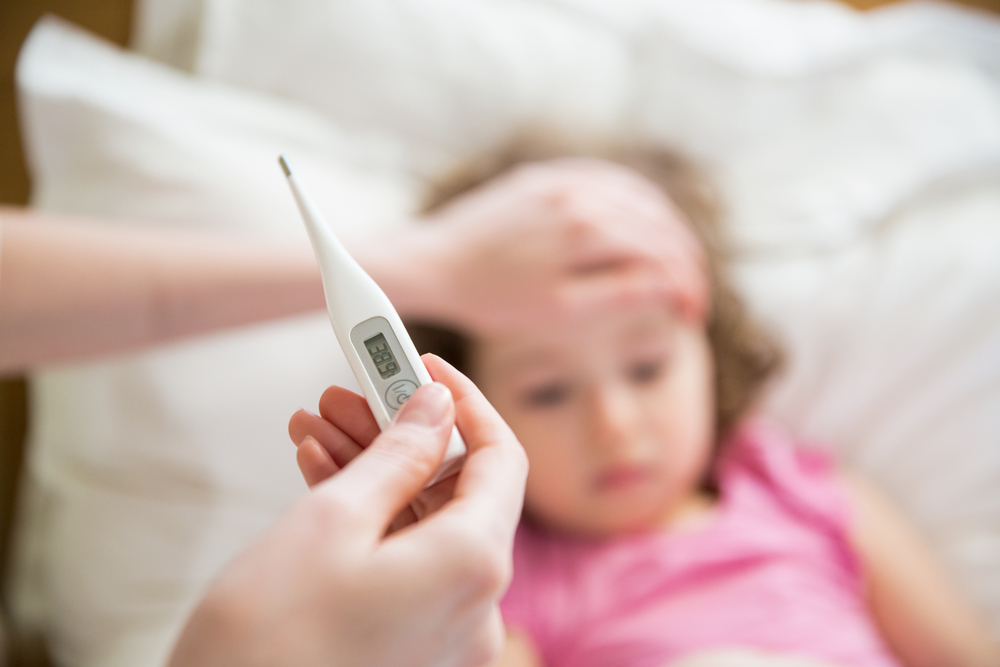It’s that time of year again! And no, we’re not talking about Christmas. It’s flu season! The flu is a nasty virus that is highly contagious and hard to avoid in the winter months. As if we didn’t already have our hands full with the flu, we also have to worry about adenoviruses. If you’re like me, you probably have never heard of an adenovirus before, but you’ve probably encountered one. Self magazine points out that while an adenovirus looks like the flu and acts like the flu, they’re not the same.
A report by the Center for Disease Control and Prevention (CDC) from February 2018 shows that while adenoviruses are quite common and treatable (they’ve been knowingly around since the 1950s), they can also be fatal and may be causing more flu like illnesses than we thought. The best way to fight off any kind of illness, flu or adenovirus is to be informed. Here’s a look at everything you need to know about adenoviruses…
What are Adenovirus Infections?
Stanford Children’s Health defines the adenoviruses as a group of common viruses that often cause a respiratory illness like “a common cold, conjunctivitis, croup, bronchitis, or pneumonia.” There are over 50 different strains and most people have experienced one or all of these viruses at some point in their life. They can affect our eyes, airways, lungs, intestines, urinary tract, and nervous system. They often come in the form of fevers, sore throats, coughs, pink eye, and diarrhea.
Similar to other infections, those with a weak immune system are more susceptible which is why we see more adenovirus infections in children than we do in adults, but they can occur at any age. “Most kids will have at least one type of adenovirus infection by the time they’re 10,” says WebMD. This is how common they are. While they often only cause mild symptoms and they tend to heal on their own, they can be more serious, especially for those with a weaker immune system like children and the elderly.
How Does it Spread?
Adenoviruses are extremely contagious and often found in areas with a large group of children like day care, school, or summer camp. The viruses are most common spread through coughing or sneezing which sends droplets containing the virus into the air where it then lands on another surface where it’s often picked up by someone else. Adenoviruses are more common in children and are often transferred when one person touches another or they pick up an object that has been infected like a toy and then touch their eyes, nose or mouth. This form of transmission is through a respiratory tract infection.” The secretions from the respiratory tract may contain the virus. The virus can also survive for many hours on inanimate objects, such as doorknobs, hard surfaces, and toys,” writes the Stanford Children’s Health.
There is another way it can be transferred and that’s through intestinal tract infections. These are a digestive strain of the virus which are transmitted by “fecal-oral contact. Usually this occurs from poor hand washing or from ingestion of contaminated food or water.” It can also occur from changing a diaper, not washing hands after using the bathroom, or even through water like in small lakes or poorly maintained swimming pools, but that is extremely rare.
Doesn’t Have a Seasonality
Unlike the flu, the adenovirus doesn’t have a particular season where it rears its ugly head. Unfortunately, it’s an all-year round battle. “Outbreaks of adenovirus infection can occur throughout the year. They are usually associated with respiratory illnesses or conjunctivitis,” says the CDC.
Symptoms of Adenovirus
In most cases the symptoms of adenovirus are mild and can be managed with over-the-counter medications or home remedies like plenty of sleep and fluids. “Common adenovirus symptoms include fever, headache, body aches, cough, congestion, sore throat, and swollen glands, and sometimes stomach distress and breathing problems,” writes Self magazine.
WebMD divides the symptoms up by condition because there are many different strains of adenoviruses. For example bronchitis will cause a “cough, runny nose, fever, and chills,” whereas a cold and other respiratory infections will result in a “stuffy and runny nose, cough, sore throat, and swollen glands.” Croup causes a barking sounding cough, difficulty breathing, and a high pitched wheezing noise while trying to breathe. Pneumonia causes a cough, difficulty breathing, and a fever. An ear infection will have ear pain, irritability, and fever, and pink eye will result in “red eyes, discharge from your eyes, tearing, feeling like there’s something in your eye.”
On the other hand, stomach problems involving vomiting, cramps and diarrhea are caused by stomach and intestinal infections.
When to Call the Doctor
If a child contracts one of the adenoviruses it’s best to seek medical attention because their immune system will be much weaker than that of an adults. WebMD warns that a baby under 3-months that has an adenovirus needs immediate medical attention. If a patient, child or adult, begins to exhibit serious symptoms like difficulty breathing, swelling around the eyes, a fever that doesn’t go away for several days, or any signs of dehydration, then call the doctor.
How Long Does it Last?
The symptoms of adenoviruses usually start anywhere from two days to two weeks after contact is made and in most cases of adenovirus typically last around 10 days. “Most adenovirus infections last from a few days to a week or two. Severe infections may last longer and cause lingering symptoms, such as a cough,” says Kids Health.
No Vaccine for Adenovirus
At this point in time there is no vaccine (at least not one available to the general public) that fights against adenoviruses. The vaccine is only provided to military personnel and it only protects against the two major strains of adenovirus. The U.S. military began providing this vaccine to military recruits in 1971 after outbreaks of the adenoviruses. “When vaccine production stopped in 1996, cases of adenovirus in the military increased, as the disease spread easily in close quarters. This re-emergence of the disease led to the reintroduction of the vaccine among recruits in 2011,” writes LiveScience.
According to the U.S. Army Medical Material Development Activity, the vaccine provided by the military prevents approximately 15,000 cases of the adenovirus in military recruits. The CDC did a report in 2018 on respiratory infections caused by the adenovirus and suggested that the vaccine be provided to non-military members as well, especially those who live in close quarters like long-term care facilities or college dorms.
Dr. Amesh Adalja, a senior scholar at the Johns Hopkins Center for Health Security told LiveScience that he agrees “because [adenovirus] does cause a considerable burden of illness, we want to explore” the ability to use this vaccine on others. It could be extremely beneficial to patients with compromised immune systems or lung disease, however more research on the subject is needed in order to determine who exactly would benefit and whether it would be cost-effective, said Dr. Adalja.
How is the Adenovirus Infection Diagnosed?
The average person won’t be able to tell if they’re suffering from an adenovirus or the flu because the symptoms are so similar. The only way to tell is to visit a doctor and have them do a laboratory test. Self magazine notes that the biggest difference between the two which could help distinguish between the two is timing. The adenovirus is present all year round whereas the flu tends to only surface during peak seasons between November and May. So if you’re suffering from the flu in the middle of the summer, it’s probably an adenovirus.
The Stanford Children’s Health website also notes that the adenovirus can be diagnosed through a “culture of respiratory secretions by nasal swab, stool culture,” or a chest x-ray. The chest x-ray includes a “diagnostic test that uses invisible energy beams to produce images of internal tissues, bones, and organs onto film.”
Adenovirus Infection Treatment: Respiratory Infection
The treatment depends on a variety of factors including age, severity of the case, and the patient’s tolerance. In most cases the adenovirus is mild and can be managed at home. WebMD lists a few at-home remedies to try which starts with plenty of fluids. “Kids lose fluids from fever, vomiting, and diarrhea. They can get dehydrated. Water or 100-percent fruit juice are the best choices to keep kids hydrated,” says WebMD. You can also help clear their congestion by having them blow their nose often.
In the case of an infant, use a few drops of a saline spray and then suction out with a bulb syringe. A cool-mist humidifier will also help with congestion or talk to your doctor about using Tylenol or Motrin to bring down a fever and relieve aches and pains. Do not give children anything that contains aspirin. It can lead to a serious condition known as Reye syndrome.
In severe cases, if the patient is having trouble taking in fluid orally, they can also try an intravenous (IV) line to help provide the essential electrolytes. The second thing to do is to get on bronchodilator medication. “Bronchodilator medications may be used to open your child’s airways. These medications are often administered in an aerosol mist by a mask or through an inhaler,” says Stanford Children’s Health. You can also try giving supplemental oxygen through a mask, oxygen tent or nasal prongs. In severe cases a mechanical ventilator or respirator may be needed to assist with breathing for a period of time.
Adenovirus Infection Treatment: Intestinal Infection
Similar to the respiratory infection, an intestinal infection by the adenovirus is treated based on a variety of factors and antibiotics won’t help because these viruses aren’t caused by bacteria which is what those drugs are used for. According to Stanford Children’s Health intestinal infections should always be treated with oral rehydration. “Oral rehydration with water, formula, breast milk and/or special electrolyte-containing fluids (fluids containing sugars and salts), such as Pedialyte, is important. Very young children should not be rehydrated with soda, juices, or sports drinks,” says the source. If a child is able to eat solids they should.
In more severe cases, other forms of treatment that should be sought are a blood test to measure electrolyte levels, a nasogastric (NG) tube for feedings in order to provide the patient with formula or fluids or they can be replenished through intravenous (IV) fluids.
How Can it be Prevented?
The best way to prevent it is to follow the CDC’s rules around hand washing, avoiding sick people, and keeping all communal surfaces clean, especially when there’s a sick person around. Tsippora Shainhouse, M.D., a board-certified paediatrician and clinical instructor at the University of Southern California told Self that hand washing is extremely important when it comes to prevention.”It’s not uncommon to get sick by shaking hands or touching a surface that was recently exposed to droplets and then touching your eyes, nose or mouth,” she said. The CDC recommends following the 20-second rule which is how long a person should spend washing their hands. Be cautious about washing hands after visiting public places, before eating, before, during and after meal prep, handling garbage, taking care of a sick friend, or after sneezing.
Despite there being a lot of concern about the spread of adenovirus, it’s not something to be too worried about. Remember these are viruses that have been around for a long time, so you’ve probably already encountered one at some point. “Adenovirus is something that has always been around and always caused respiratory infections — nothing has changed,” says Dr. Adalja to Self magazine. “The vast majority of adenovirus infections result in the common cold and don’t merit much worry.” For those who are already sick, please keep your child at home and away from others to avoid spreading the illness any further. Also, teach them the proper etiquette when it comes to coughing and sneezing.
What Complications Can Arise?
Adenovirus infections are usually quite mild, but they can be severe. In some cases the adenovirus can lead to pneumonia or respiratory failure. “When infection is this severe it would involve ICU admission and the use of a mechanical ventilator,” says Dr. Adalja to Self magazine. The worst case scenario is that someone who is immunocompromised or already has pre-existing lung disease contracts an infection in which the result could be fatal.
When it comes to complications or any severe case, the most important thing is to determine whether or not the infection is due to the flu or an adenovirus. Tamiflu is an antiviral drug that can be used to treat influenza strains, but it would be ineffective on the adenovirus. On the other hand, the CDC lists a different antiviral drug called cidofovir which can be used to treat severe cases of adenovirus infection. “In immunocompromised patients with adenovirus-related pneumonia, the antiviral drug ribavirin may be used,” writes Self magazine.















